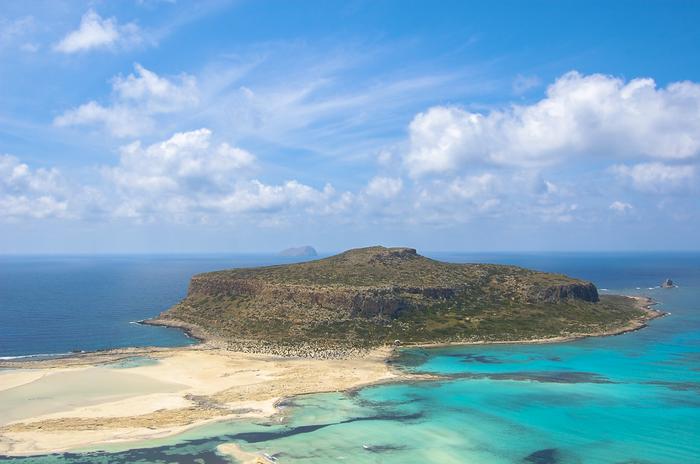It’s an unusual collaboration. Botanists and archaeologists don’t often work together, unless they’re studying the way people have used plants through time. But a new four-year grant from the National Science Foundation is shaking things up. It provides more than $1 million to study how Mediterranean plants that people have largely ignored evolved and diversified in one of the most formative periods of human history.

Credit: Photo by Andy Crowl
It’s an unusual collaboration. Botanists and archaeologists don’t often work together, unless they’re studying the way people have used plants through time. But a new four-year grant from the National Science Foundation is shaking things up. It provides more than $1 million to study how Mediterranean plants that people have largely ignored evolved and diversified in one of the most formative periods of human history.
“The Mediterranean is at the crossroads of Europe,” said Nicolas Gauthier, curator of artificial intelligence at the Florida Museum of Natural History and co-principal investigator on the grant. “It’s the nexus of social, climatic and environmental changes that occurred across these regions.”
Researchers from the Florida Museum, Southern Illinois University and the Smithsonian Museum of Natural History will focus on a hyper-diverse group of herbs called bellflowers. Their primary goals are to understand the relationships between bellflower species, when and where they originated in the Mediterranean and how human activity has inadvertently altered the diversity and distribution of this group over the last several thousand years.
If it works, investigators say they’ll have created a playbook that can be used to answer similar questions in any region for which there is sufficient historical information about human activity.
“This is data that we don’t traditionally use in an evolutionary context,” said principal investigator Nico Cellinese, curator of herbarium and informatics at the Florida Museum. “We intuitively know that landscapes have been manipulated and transformed by humans, but we don’t know exactly how these changes have affected the distribution of different lineages of plants and animals.”
Bellflowers are the perfect candidate for this initial study. They diversified throughout the Mediterranean before the arrival of humans, have generally narrow distributions — making it easier to trace their history of dispersal — and they don’t have any direct application to agriculture.
“It’s unlike other cases, such as cultivated grass species that humans moved around,” Gauthier said. “We can use bellflowers as a tracer. They haven’t been directly impacted by humans but could potentially tell us about the cascading impacts on ecosystems from humans.”
Even before humans showed up on the scene, the Mediterranean was a hotbed of biological activity and environmental change. Around 5.9 million years ago, the Strait of Gibraltar between Europe and Africa was sealed off. Dry conditions in the region meant there was little water to replenish the Mediterranean Sea, and much of it subsequently evaporated. This killed most of the organisms that lived inside it and left behind thick slabs of salt nearly two miles thick in some places.
Areas that are today occupied by islands, such as the Aegean archipelago, were part of one large landmass connected to the rest of Europe and Africa, allowing plants and animals to move freely. Less than a million years later, the dam broke, and water from the Atlantic poured into the Mediterranean during a period of months to years called the Zanclean flood.
As the waters rose, plants and animals were again isolated on islands, where they evolved into new species.
“Some bellflower species are endemic to one or two islands, but is this endemism a consequence of geological or human activity? This is something that no one has ever really looked at in detail,” Cellinese said.
Investigators on the grant will combine a new and unpublished archaeological dataset of human activity in the Mediterranean with genetic data to determine when bellflowers evolved and where they likely grew.
“We have a record of the timing of human colonization on different islands. This is something that you don’t get in mainland areas, where we can never quite know for certain when human activity started or stopped,” Gauthier said.
With that information in hand, the next phase of the project will incorporate computer modeling to determine which environments are suitable for different bellflower species to grow in. Often, when a plant is absent from a suitable, nearby environment, it indicates human activity or other factors are restricting its range.
Gauthier will further fine-tune these analyses with artificial intelligence. Using a technique called downscaling, AI can take information on global climate change and translate it into the scale of local landscapes that plants actually experience, Gauthier said.
“You can know that it might be two degrees warmer in the northern hemisphere, but what does that mean about the west-facing slope of this one mountain that is next to the ocean? We can use AI to bridge that gap in scale.”
The Mediterranean Sea is one of several regions worldwide that have similar climates and similar problems. Following the completion of this project, Gauthier said these areas should be among the first for which this type of research is conducted.
“This biome is one of the most threatened by contemporary climate change,” he said. “They’re places where we see warming happening faster than the rest of the world, because they’re so sensitive to regional circulation patterns. This project is a test case for how these kinds of ecosystems will respond to climate change in the future.”
Torben Rick of the Smithsonian Institution National Museum of Natural History, Jennifer Weber of Southern Illinois University and Andrew Crowl of the University of Florida are also co-principal investigators on the grant.



